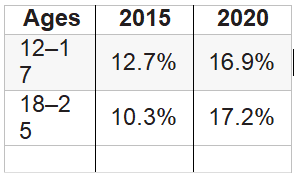Tip of the Month - November 2023
Common Types of Depression
Society, in general, endured symptoms of tension, stress, anxiety, and fear (Angst… as the Germans call it) before the COVID-19 Pandemic, which tends to reflect at an estimated 10% in the sports community. However, ever since emerging from the forced isolation due to the pandemic, things have worsened among teens, younger and older people, but especially among younger children. Not being able to socialize with friends or extended families, classmates, or sports teammates has caused irreparable damage to the psyche of society and the souls of children and youth. We are experiencing a critical rise in mental problems.
This calls for mental management by sports coaches to monitor their athletes’ physical and emotional state and overall wellness to function in school and training. This means being able to detect some of the most common types of depression, which share similar symptoms such as declining energy, loss of appetite, emotional numbness, etc., but each type can feel slightly different. According to a 2022 Study looking at 2015 through 2020, the rates of depression in the United States increased as follows:
When experts use the term clinical depression, they are generally referring to major depressive disorder (MDD a mood disorder characterized by several key features:
Depressed mood
Lack of interest in activities usually enjoyed
Changes in weight
Changes in sleep
Fatigue
Feelings of worthlessness and guilt
Difficulty concentrating
Thoughts of death and suicide
It is essential that coaches have an open and positive relationship with their athletes, can detect changes in behaviour and moods, and have the ability to monitor and facilitate open communication for emotional assistance and guidance and/or referral to professional help. For example, well-known Olympic swimmer Michael Phelps hid in his bedroom for 4 days with suicidal thoughts which made me question: Where was his coach? If one of my athletes does not show up for a workout, I contact the parent immediately that evening!
Furthermore, I firmly believe that coaches must incorporate mental skills training and activities such as yoga, tai chi, deep breathing exercises, and progressive relaxation in the Post-training phase ( former cool-down) to help athletes manage their anxieties and stress levels.
References:
Goodwin, R.D., Dierker, L.C., Wu, M., Galea, S., & Hoven, C.W. (2022). Trends in U.S. depression prevalence from 2015 to 2020:The widening treatment gap. Am J. Prev Med. 63(5): 726-733. November.
Healthline. (2023, November 29). Anxiety & depression. Six common types of depression. New York: Healthline Media.
